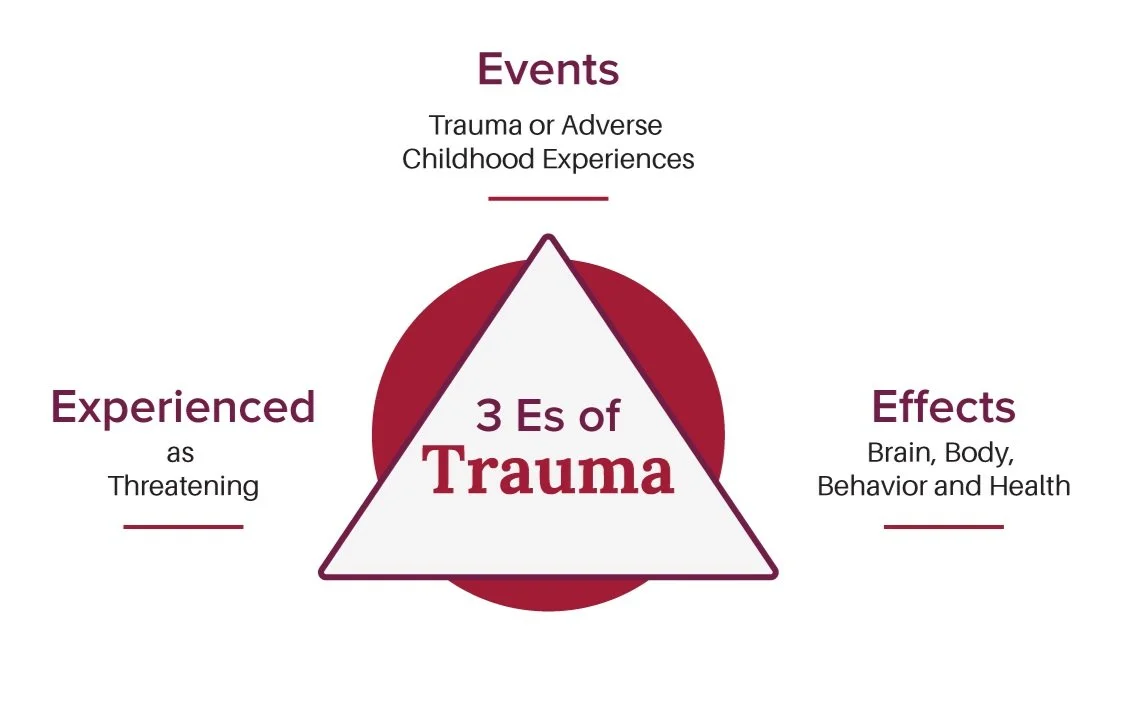First Actions
Following the Difficult Event
School and district leaders are amongst the first responders when a crisis (e.g., student death, natural disaster, or traumatic event) impacts their school community. These administrators and leaders work directly with students, staff, and families, which can be emotionally draining and overwhelming. They may experience vicarious trauma, which means they absorb some of the emotional pain and stress of those they are helping. For these reasons, TRIS was created to support school leadership during these difficult times.
You never have to manage a difficult event impacting your school alone; let TRIS help you think through the next steps with clarity and care.
Request a Consultation
After you have requested a TRIS consult, consider how you have learned and are continuing to learn information. Ensure that information is accurate and factual. Consider family preferences if the difficult event is related to an individual child or teacher (e.g., death of a child). Also, make sure that you refer to your school or district crisis response plans and related policies if the event is covered by those documents.
Gather Current Accurate Information
Notify Staff
Consider meeting first with staff most likely to be impacted. If possible, hold a meeting before school to share information, note students needing extra support, monitor staff well-being, and review the process for identifying students who may need a higher level of care. Ideally, designate a space monitored by counselors or mental health staff for ongoing support in the days that follow.
Communicate Clearly and Transparently
Create a Centralized Information Hub
Establish a single point of contact (e.g., a designated phone line, website, or email) for parents, staff, and community members to get updates.
Notify Caregivers
Let caregivers know about the event so that they are prepared to support students outside of school. Prepare resources to share with caregivers, such as the NCTSN Tips for Parents and Caregivers on Media Coverage of Traumatic Events and NCTSN Age-Related Reactions to a Traumatic Event.
Consider How to Deliver News
Share information with students in an age- and developmentally appropriate manner. Use direct, concrete words. For example, in the event of a death, use terms like died or death instead of lost or not here anymore, especially with younger children. Difficult news is often best received from a trusting adult they know. Also, consider delivery to small groups rather than to the entire school. Read more about age and development considerations.
Deliver Developmentally Appropriate Communication to Students
Consider Who Should Deliver the Information
The best person to deliver difficult news to students is a combination of people who can provide support and guidance, such as teachers, administrators, counselors, and mental health professionals. Approach these conversations with empathy, honesty, and a focus on the child's well-being.
Provide Only Essential Information
When students have questions, be thoughtful to answer only with the information they are seeking. Be transparent and remember it is okay to say, “I don’t know.” Explore our sample scripts and communication resources.
Support Students and Staff in the Immediate Aftermath
In addition to information, students and staff benefit from the availability of emotional support immediately following the difficult event.
It is important to have staff and counselors available to listen and offer comfort. Consider involving community mental health partners and faith leaders. Remember, staff may also be experiencing emotional stress and should be offered support, as well.
Students and staff both need safe spaces to express emotions. It is important for students and staff to have their own safe spaces to talk about the complicated emotions surrounding a difficult event.
Provide structured activities for students to process their feelings in their own way. Some may need more physical activities (e.g., playing catch) and others may need a quieter, still activity (e.g., sitting in a quiet room). Some may want to be alone, and others may desire companionship.
Provide Immediate Emotional Support
Using This Toolkit
During a difficult event, it is challenging to find easy-to-read, reliable resources to assist you and your impacted community. Our team has written this toolkit to help school administrators and counselors with this struggle. It can be read straight through or used for quick reference. Links to resources and more in-depth information are provided throughout the toolkit. You may choose to read sections out of order, to read the entire resource at surface level and then click on links to explore additional information, or some combined approach. We want you to feel comfortable exploring the content in whatever manner suits you.
You will notice that TRIS availability for customized consultation following a school crisis is mentioned throughout the toolkit.
We want every school and every district in the state of Arkansas to know that, while this resource includes useful information, they never have to navigate the aftermath of a crisis alone. Instead, should a difficult event impact your school, you can reach out to the ADE Guidance and School Counseling Team to request a TRIS consult.
In subsequent sections of this toolkit, you will find general information about trauma, crisis management, time-based considerations, and select, high-quality resources. We start by discussing what is meant by the word
crisis and how that term refers to a wide array of situations.
In schools, the word crisis often refers to a natural disaster, an act of violence, or something else that immediately threatens the physical safety of a student or staff member. However, when using this toolkit, or when thinking of the consultative services available through TRIS, the word crisis can be thought of as any difficult event that affects your school or district. This might be a natural disaster, a suicide, an accident, heightened violence in the surrounding community, death, school-based violence, a serious illness or injury of someone within the school, or any other event that is particularly difficult for your school or district. Because of this, the terms difficult event and crisis are used interchangeably in this resource.
The word trauma also means different things to different people; but experts commonly talk about three key factors when discussing a trauma: the event itself, the experiences of an individual during and after the event, and the effects that follow.
Trauma and Crises
The Event
This is the specific difficult incident, situation, or crisis (as described above). Throughout this toolkit when we say difficult event, this is what is meant.
The Experience
The thoughts, feelings, and physical sensations an individual has during and immediately after an event is their experience of the event.
The Effect
The effect refers to the lasting impact of the event and the person’s experience of the event. The effect of an event can, and often does, vary widely.
Different people experience events in different ways. At times, the immediate response to an event helps to shape a person’s experience of the event. This is why we recommend a trauma-informed
approach when responding to a difficult event.
A trauma-informed approach emphasizes safety, trust, sensitivity, support, collaborative relationships, and understanding the potential wide-ranging impact of a difficult event (i.e., the effect). If a difficult event affects your school, some students and staff members may adjust very well, while others may need more intensive, individualized support services.
Resilience is the ability to adapt and recover in the face of adversity and difficult events. While most individuals naturally demonstrate resilience, it is also a skill that can be nurtured through supportive relationships, coping strategies, and a sense of control over one’s environment. In the context of trauma, resilience does not mean avoiding distress but rather learning to process emotions, find meaning in experiences, and regain a sense of safety and empowerment. A trauma-informed approach to managing a difficult event includes steps we can take to nurture resilience.
Trauma-Informed Management
of Your School or District Response to a Difficult Event
A trauma-informed response to a difficult event is essential because it promotes coping and adjustment, fosters resilience, and helps you identify and facilitate additional supports for those in need. This type of response appreciates that crises are experienced differently by individuals and that many factors—including factors beyond our control—contribute to the effect a difficult event can have on a person. Use of a trauma-informed approach requires you to consider how the event impacts students and staff—both as a whole and as individuals. When you use this type of approach, you recognize that changes in a person’s behavior, emotions, interactions, or academic functioning could be related to the difficult event. When you notice these changes, consider them within the context of the difficult event. These changes may indicate that someone needs additional, individualized support services.
While your first step always is to ensure physical safety, you also should address any immediate emotional needs promptly. Remember that children and teens will have different emotional experiences. Misbehavior, change in behavior, or change in academic performance following a crisis may indicate a student is having difficulty managing their feelings related to the difficult event.
Prioritize Physical and Emotional Safety
Maintain routines as much as possible. It can be difficult to maintain routines after a difficult event, but it is important to avoid altering schedules and routines when possible. Consistency often helps students and staff feel safe and secure. Also, consistency and predictability contribute to trusting relationships among staff, students, and family members.
Be Consistent and Predictable
Be open and honest with students, staff, and families about what is happening (or has happened) and what will happen next. Open communication promotes trust. This guide contains helpful tips and scripts about communicating with students, staff, and families.
Be Truthful and Transparent
When a difficult event occurs, people often feel a loss of control. Allowing them to make simple choices—like where to sit, when they take a break, or how they express feelings—can help them feel more in control and empowered. Remember, both students and staff are likely to benefit from opportunities to make individual choices.
Allow Individual Choices
Use active listening and acknowledge expressed or observed emotions without adding judgments, offering solutions, minimizing, or being dismissing. Try to listen to understand as you validate feelings. Remind students, staff, and yourself that it is okay for someone to feel whatever they feel. Validating feelings helps individuals feel supported, connected, and like they (and their feelings) matter. As a result, it can help reduce feelings of isolation. However, it is important to note that while some students benefit from talking about the event repeatedly, repetitively hearing about an event may be distressing to others. Redirect conversations to counselors as needed.
Validate Feelings
It can be difficult for students and staff to feel calm and regulated following a difficult event. Yet, we know that modeling calmness following a difficult event helps people regulate and feel more in control. Staff are encouraged to try to model calmness. They can also verbalize self-regulation strategies they use. For example, “I can feel my heart beating quickly, so I am going to close my eyes and take a few deep breaths.” “My mind knows we are safe; I need my body to feel that safe, calm feeling. This is how I do that.”
Co-Regulate and Model Calmness
Students also can be directly taught strategies to help them manage their emotional reactions. For example, you might consider explicit teaching of deep breathing or mindfulness exercises. Check out the UAMS AR ConnectNow Build Skills for Mental Health page for a variety of strategies that promote coping, help with regulation, build resilience, and foster strong mental health.
Teach and Promote Coping Skills
Recognize the strength and resilience of your school community. It is okay, and even advisable, to point out strengths and past successes. You can notice strengths and positives without diminishing the difficult circumstances surrounding you. It is appropriate to highlight resilience when you see it as this helps build resilience.
Recognize Strengths
Students should feel nurtured by the adults both within and outside of their school environment, particularly in the context of a difficult event. Foster relationships with families, outside helpers (e.g., counselors), and other community members to reinforce social connections and support.
Connection and Relationships
Avoid making assumptions about how someone experiences the difficult event and about the impact the crisis has on them. Several factors contribute to our experiences and the impact of a crisis. When you are sensitive to these differences, it helps you ensure your approach does not add to distress.
Consider Differences
You are a member of your school and district communities. Because of this, if a difficult event affects your school or district, we encourage you to think about how the event impacts you and to take steps to take care of yourself. Remember, you do not have to do this alone. TRIS is available to walk alongside you if a difficult event impacts your school community.
Take Care of Yourself
Following a difficult event, you might recognize the need for more
of your staff to be trained in trauma-informed practices.
Or perhaps you are reading through this toolkit and think that you would like to explore trauma-informed trainings for you and your staff before a difficult event occurs.
In either instance, we encourage you to check out the current training opportunities provided by TRIS. You also can reach out directly to the TRIS team to discuss your training needs.
Building on these general principles, school leaders can take specific actions in
response to a difficult event. These steps are described in the next section.
To learn more about the impact of trauma on students, explore NCTSN Trauma Facts for Educators
For More Information






